---------------------------------------------------------
In 2020 we grew our farm with the addition of two super sweet, super fluffy alpacas. Anytime you add a new type of animal to the farm, there is a ton of new information to learn. Alpacas are no exception. They were our first foray into larger livestock so there was even more to learn. Handling a 150 pound alpaca is a lot different than a 8 pound chicken!
Seek out other alpaca owners
While we are far from experts, we have learned a ton in the past several months. One of the most important things you can do as a new alpaca owner is to find a knowledgeable mentor. The breeder you purchase your alpacas from should be a valuable source of information, and they know your particular animal really well.
You will also want to find a local veterinarian that has experience with camelids. Your vet will be able to advise you on parasites in your area, help you monitor the alpaca’s health, give vaccines, and be there in case of an emergency.
Online communities can also be a great resource. I personally have learned so much from the Facebook group “Alpaca Everything”. Group members with decades of experience, and people brand new to keeping alpacas all coming together for the love of alpacas!
Blogs, research websites, YouTube, and books also offer valuable sources of information. The more prepared you are and the more reading you can do before you bring your alpacas home, the smoother everything will go.
Following are the most asked questions new and prospective alpacas owners have, along with some online resources I have found helpful in my journey.
What do alpacas eat?
The majority of an alpaca’s diet will be made up of hay and grass. They are herbivores, so they can only digest vegetation. You should never feed your alpaca meat or animal products. Alpacas have a three-chamber stomach and chew cud, allowing them to process small amounts of food efficiently. An adult alpaca will eat 2-3 pounds of hay or grass per day. Hay should always be offered free choice, year-round for them.
You should also supplement your alpaca’s diet with some quality alpaca pellets. We give each of our alpacas 1/2 cup of pellets in the morning and 1/2 cup of pellets at night. They will gobble these up so fast, you don’t want to offer pellets free choice. Given the option, they will completely gorge themselves and end up with bloat or other digestive issues.
Alpacas have some pretty specific dietary needs and often local hay can leave them lacking in certain minerals and salt. We offer loose minerals specifically designed for alpacas free choice at all times. Stillwater Minerals is a popular source of camelid minerals.
Fresh, clean water should also be available at all times. Each alpaca will drink between 2-5 gallons of water each day (more in high heat, less in the cold). They can be a bit picky about their water temperatures, they don’t like it to be too warm or too cold!
How much space do you need to keep alpacas?
Alpacas are such efficient grazers they can be raised on smaller farms than some of the other large livestock options. The number batted about most often is you can keep 2-8 alpacas per acre. That is a huge range! If you don’t mind supplementing a lot of hay you can get 8 alpacas on an acre pasture. If you want to spend less on hay you will want to keep your herd closer to the lower end.
Pasture quality plays a role too. If your proposed pasture is patchy with more dirt and weeds than grass, you will want to keep your herd smaller or be prepared to supplement more hay.
In addition to pasture, they will need an indoor shelter. It can be as simple as a three-sided open shed or a fully enclosed barn. The indoor space will offer them shelter from the elements, and if it is fully enclosed, safety from predators. It is recommended to have at least 40 square feet of shelter space per alpaca.
Alpacas are herd animals and do best in larger groups. You should never keep a single alpaca. The stress of not having a herd can make them very sick and could even lead to death. At the bare minimum, you should plan to have two alpacas. Three is a better minimum that will allow them to trade sleep shifts – as prey animals one will always stay alert to guard the herd while the others sleep.
Is it a lot of work to keep their area clean?
No! Alpacas are very clean animals. They prefer to poop in a communal pile (like a really large litter box area). The alpacas will pick out one or two spots to do their business. Once a day I take a shovel, rake, and farm wagon and clean up the pile and dump it in the compost area. Easy & fast!
They also are great at keeping the grass in their paddock area trim, meaning much less yardwork for you. Alpacas don’t have top incisors, so when they eat grass, they are only trimming the tops. Other grazing animals have top & bottom incisors and tend to rip grass out by the roots.
Do alpacas spit?
Camels, llamas, & alpacas are all camelids. Camelids don’t have a lot of natural defenses, but they do all spit. Llamas probably have the worst reputation for spitting, but alpacas do also spit. Most often alpacas don’t spit at humans. Usually, the spitting is at other alpacas when they are feeling grouchy or territorial. Alpacas all have their own personalities and some are more prone to spitting than others, but in general, you have to make an alpaca pretty angry for it to spit at you.
Fair warning – the spit smells. It smells REALLY bad! It’s green and smells like vomit (because it basically is, their spit is regurgitated contents from their stomach). It is something you definitely want to avoid. Sometimes our alpacas will try to spit at us when we give them vaccines or cut their nails. Their spit leaves a bad taste in their mouth. After an alpaca spits, they will walk around for 15-20 minutes with their lower lip hanging way down trying to air out & drool the taste out of their mouth.
Do alpacas need a vet?
You will want to find a knowledgeable local camelid vet. Often farm vets or horse vets will treat alpacas. At the very least, you will want to have a vet lined up for annual check-ups. It is nice to have a professional familiar with your animals that you can call in case of an emergency. In the annual exam, your vet will give the alpacas vaccines to prevent diseases endemic to your area or that could arise from living with various animals on your farm. In New England, our alpacas get annual vaccines for rabies, CD-T (a combo for overeating disease and tetanus), and BO-SE (selenium & vitamin E). The vet will also look the animal over examining their skin, eyes, ears, nose, mouth, teeth, feet, and more. They might also take a fecal sample to test for worms. Your veterinarian will also be able to advise you on local climate or disease considerations, help with breeding and birthing, cria care, and so much more.
Do alpacas need to be wormed?
Your vet will be able to advise you on what worms are prevalent in your area and together you can come up with a plan to keep your flock free of parasites.
Alpaca owners are moving away from routine worming schedules. Routine worming is beginning to cause problems with drug-resistant worms and can also be harsh on your alpaca’s body.
Internal parasites are not unusual in grazing animals, and left untreated can make your alpaca very sick or even kill them. Instead of routine worming you will want to run regular fecal tests. If your alpacas are healthy and their poop is looking normal, you can have fecal tests done every 2-4 months. To have the test run, you collect fecal samples from each alpaca and send them to a lab. The lab will send you back results, letting you know exactly what type of worm you are dealing with, or if your alpacas are worm free. Then you can treat for that specific worm. The lab we have been using is Mid America Agricultural Research, you can find their lab forms & instructions here.
What about Meningeal worm?
Meningeal worm (or m-worm) is a parasite every alpaca owner needs to be aware of. M-worm is carried by whitetail deer, with snails & slugs being secondary hosts. The deer are generally not affected by the worm. In areas with whitetail deer, alpaca owners will want to take steps to protect their herd. M-worm infestations affect the nervous system in alpacas, treatment is very difficult and the alpaca can often not be saved. White-tailed deer are found in every state in the United States except Alaska (and are not present in small parts of Utah, Nevada, and California)
Preventing m-worm in your alpacas is easy by injecting them with Ivermectin every 4 weeks. So far, m-worms don’t seem to be forming resistance to medication so this is the exception to the “no routine worming schedule”. Consult your vet, but generally, 1 cc per 70 pounds of body weight injected subcutaneously is the recommended dosing.
We had our mentor show us how to best give injections but also watched several videos on it before we tried it ourselves. I was really nervous about doing it! But it is for their own good and it’s over pretty quickly once you know what you are doing. I found this video from Old Redding Farm to be really helpful.
Toes & Teeth
Alpacas do not have hooves like horses or goats, instead, they have soft feet with two large toenails. Just like humans, their toenails are constantly growing and will need to be trimmed. Every animal is different, but generally, toenail trimming will need to be done every 2-3 months. This is something the alpaca owner can learn to do themselves, or you can hire a professional to come to your farm and take care of their toes.
Alpacas have 3 sets of molars on each side in the back of their mouth. These are used for chewing cud and grinding food. The chewing motion keeps these teeth properly worn, and beyond monitoring them for gum disease & tooth abscesses, you don’t need to be worried about these teeth.
In the front of their mouth, alpacas have 6 incisor teeth on the bottom and a hard dental pad on top. The incisors should line up properly with the dental pad in order for them to grab and cut grass & hay. It is common for the incisors to wear or grow strangely requiring them to be trimmed back into shape. Some alpacas will never need incisor trimming, some will need it done regularly. It is important to be familiar with your alpaca’s teeth so you can act when you notice a problem. Teeth trimming is something the alpaca owner can learn to do, or you could have your vet or shearer take care of it.
Male alpacas (and some females) also have two fighting teeth. Curved and sharp canine teeth up to an inch long, these teeth are used for defense and fighting with other males. Fighting teeth should either be removed or regularly trimmed to avoid your alpaca injuring another member of the herd.
WHY keep alpacas?
First, obviously, they are really adorable! They do also provide lots of great manure for the garden. Bonus: their manure doesn’t need to be aged like horse or chicken manure. It can be used right away. But most people keep alpacas for their wonderful fiber.
Alpaca fiber is 5 times warmer than sheep wool. It is also more durable & lightweight as it contains no oils or lanolin. Because fewer people keep alpacas, alpaca fiber is considered rare and fetches a much higher price than sheep wool. Alpacas are sheared once a year, usually in the spring or early summer.
The amount of fiber you get depends greatly on the genetics, age, & diet of your alpaca. Young alpacas on an excellent diet with stellar genes might produce 9-10 pounds of prime fiber. An older alpaca of sub-par breeding might only produce 1-2 pounds. On average, you can expect 4-6 pounds of prime fiber per alpaca per year plus another 5-6 pounds of seconds and thirds (the leg & neck fur). Obviously, this is going to be VERY general based on yarn weight and knitting style and size but that is enough to make about 15-20 pairs of mittens or socks. You can sell the fiber raw, process it into yarn or finished products yourself, or send it to a fiber pool or crafter to have them turn it into products for you.
Some people also get into raising alpacas for breeding. Alpaca pregnancy lasts nearly a year and then the cria will need to stay with its mother for at least 6 months. You will also need to be able to maintain separate areas for females and males, so breeding alpacas requires you to have a decent amount of land.

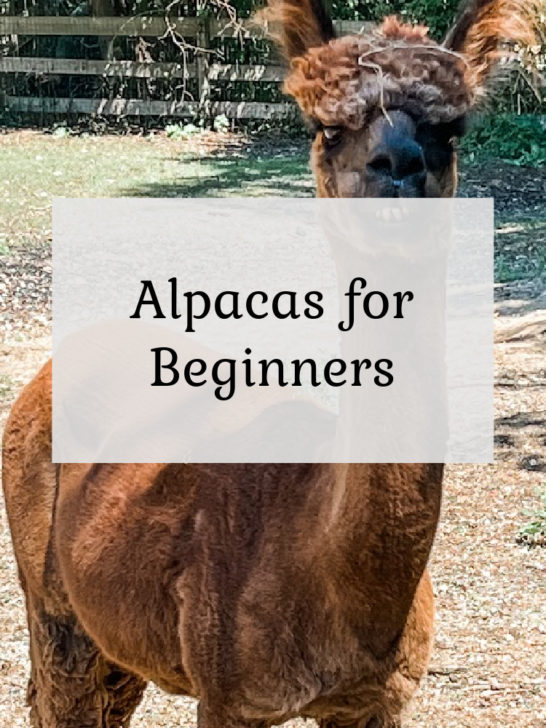


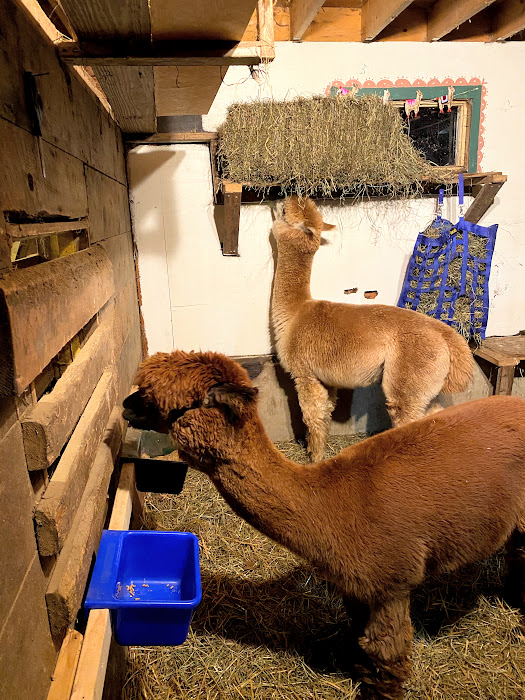
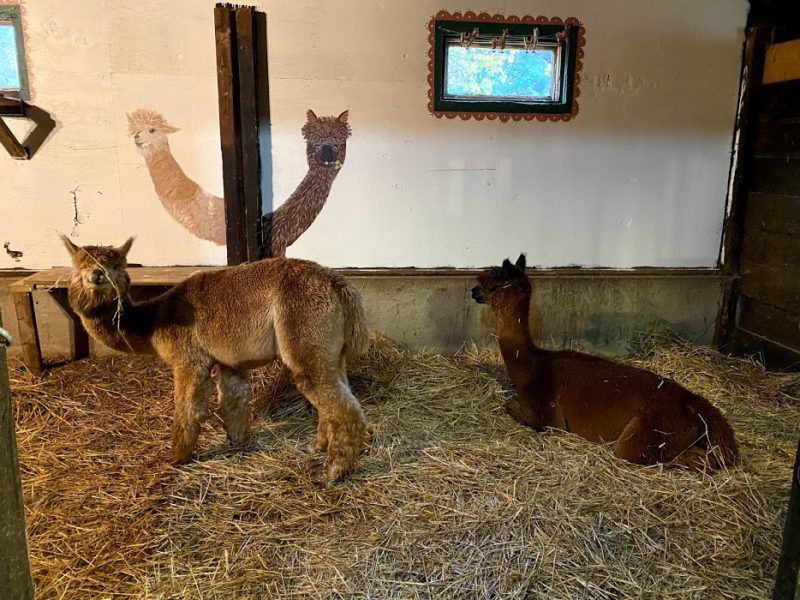
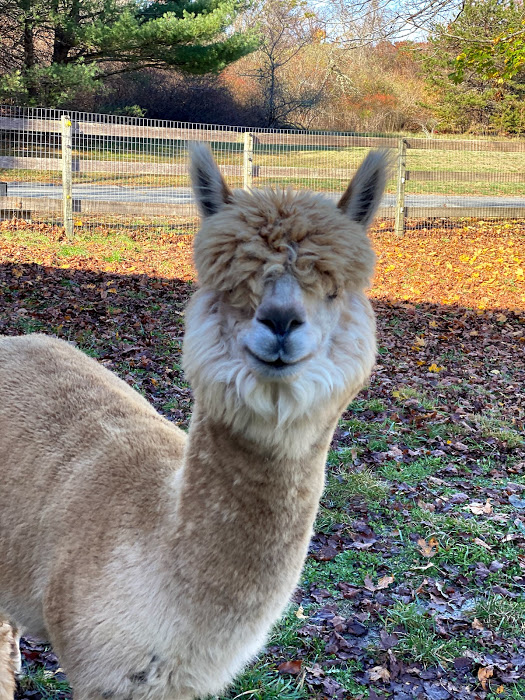
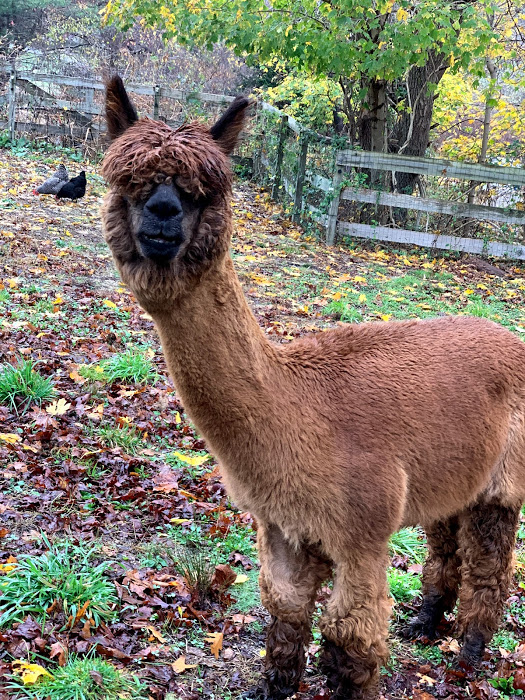
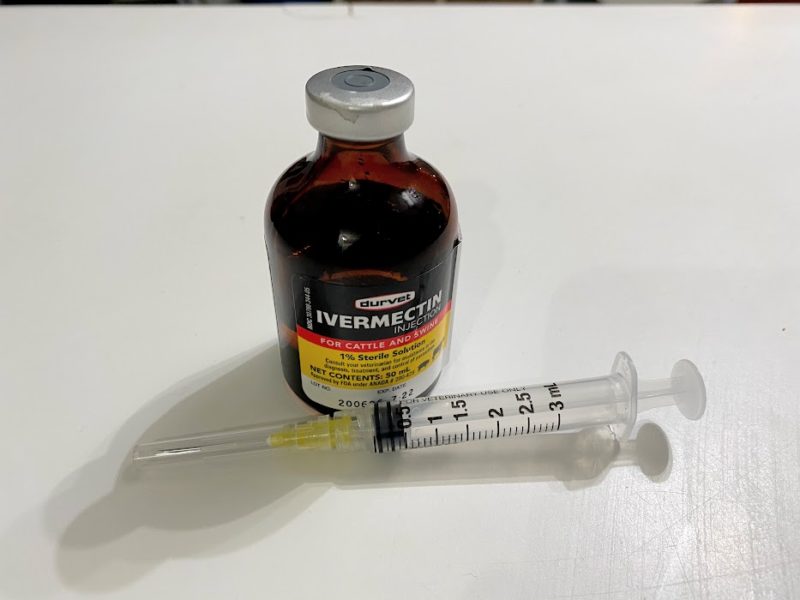
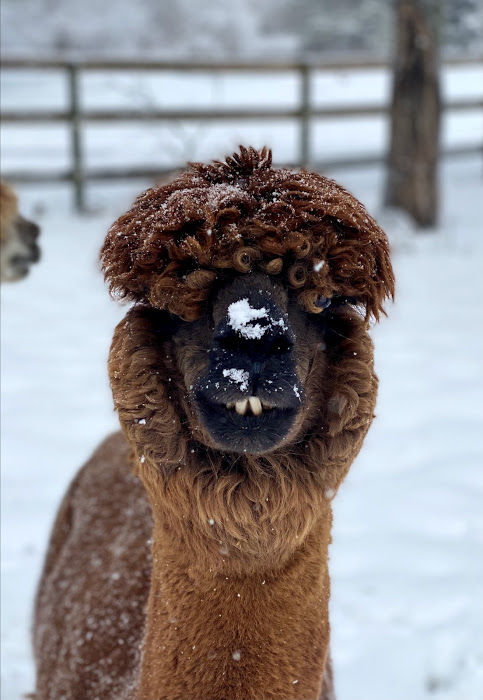
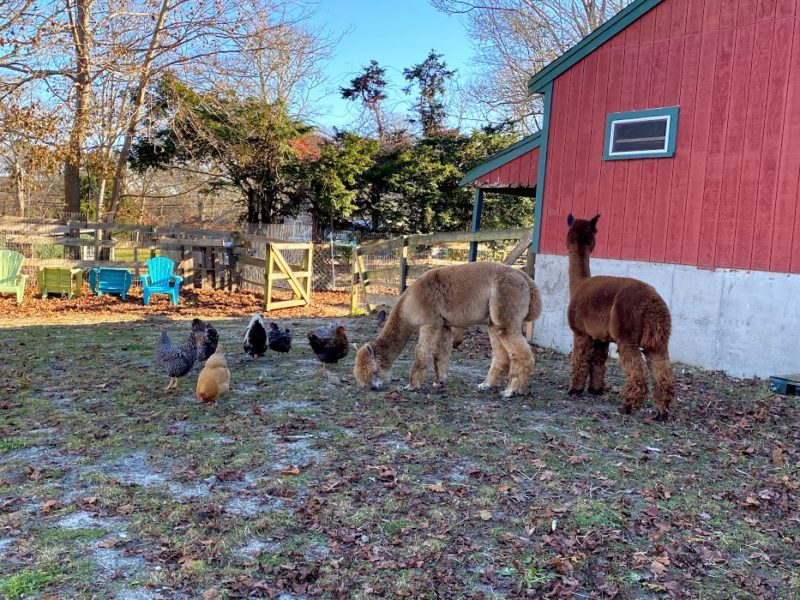


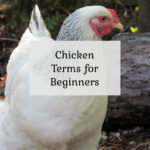

Deana Barnard
Sunday 23rd of May 2021
Hi, just found your website......we are in the UK, have chickens, ducks and Alpacas and grow all our own veg/fruit. We have two Indian Runner ducks, Daisy and Daphne, a Khaki Campbell, Haribo and a White Campbell called Henrietta. They are are all ladies but we’ve noticed that they still display the mating habits that you have talked about in your posts. Is that something you are familiar with? Daisy and Daphne are 6 years old and Daisy was always the one on top of Daphne in the pond, and now that we have Haribo and Henrietta who are 2, it seems that Henrietta (large) is now the one who is sat upon, usually by Haribo (smaller) and now also by Daphne. Lots of head bobbing usually goes on beforehand so I guess that means everyone is happy about it?
Liz
Sunday 23rd of May 2021
That is totally normal and it's not about mating, it's about dominance. Females will mount other females as a way of showing who is in charge. Up and down head bobbing is happy, side to side head bobbing is often annoyed or bossy, which is more what I see when my females do things like this.